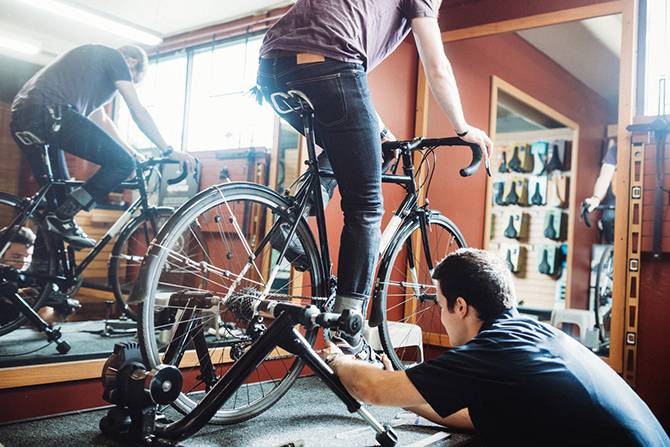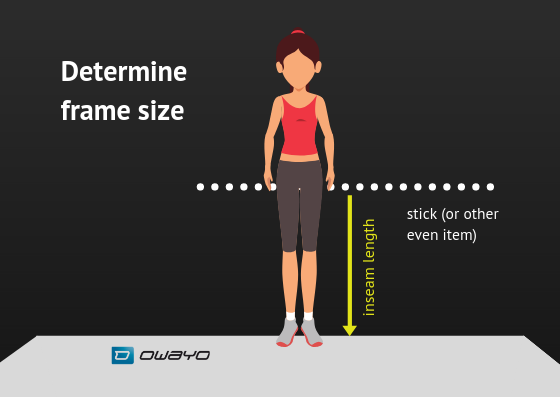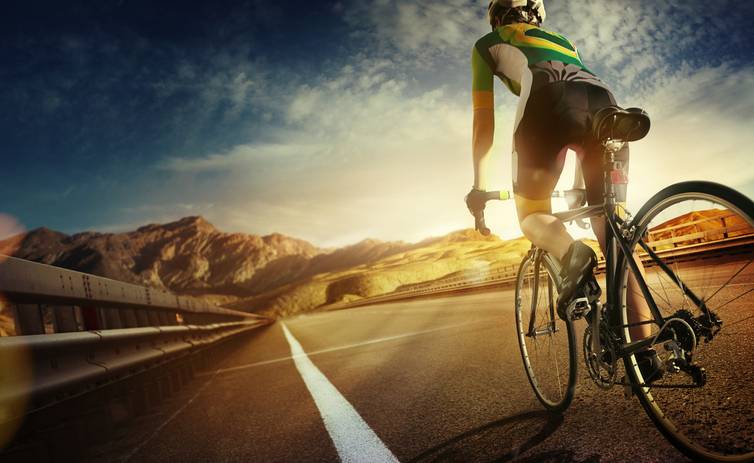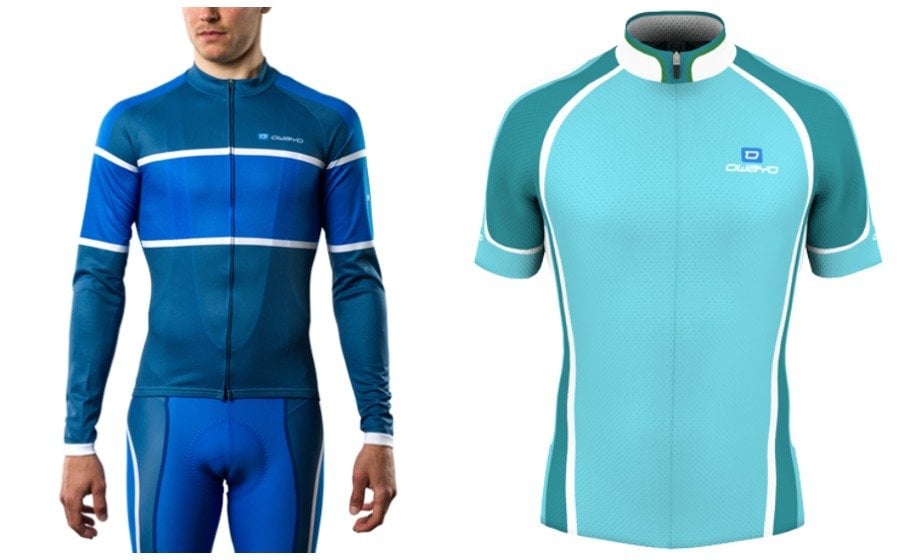Finding a Bike that Fits You
An interview with the independent cycling expert Robert Kühnen

How do I find the right bike frame for me? Find out how the seat height, handlebar position and frame size play a role in answering this question. In addition, cycling expert Robert Kühnen gives his twist on finding the right bike and 5 do-it-yourself tips on the subject of "correct cycling position".
"Pedal painlessly and efficiently and master the bike." These goals unite all cyclists from weekend cyclists to Tour de France winners. "Once you've achieved these goals, you have found the right bike that feels natural to you", explains cycling expert Robert Kühnen.
In an interview, Kühnen reveals how to achieve these goals. Robert Kühnen is a mechanical engineer and has been working in the bicycle industry since 1993: As a journalist, he heads the test & technology department of TOUR magazine. He supervises hobby and professional athletes and he is the managing director of BIKE ENGINEERING. He is also a successful cyclist off-road and on the road and. In 2011, he was time trial world champion amongst journalists and finished second in road racing. Kühnen is an independent thinker.
How do I find the right bike frame?
"There is no single bike configuration that fits everyone," says Robert Kühnen, "it varies, for example, depending on the type of bicycle," but there is a clearly defined size that must fit on a Dutch bike and a racing bicycle: the correct seat height. "It's easy to determine and also the most important aspect", says the expert, who also reveals the formula for this: "The length of the inner leg multiplied by 0.885 equals the seat height, which can also be described as the distance from the bottom bracket to the top of the saddle." By measuring the length of your leg, you can determine the correct height that you saddle should be:
How to determine your seat height
The correct seat height on the bicycle is based on your length of your inseam. You can easily calculate this:
-
1. Stand barefoot and without trousers on a flat and even surface.
2. Put a level or book between your legs and push it up.
3. Now ask someone to measure the distance between the upper edge of the level or book in your crotch and the floor.

Once you have this, just measure the distance between your saddle and bottom bracket.
What role does the handlebar position play in finding a comfortable cycling position?
„The height of the saddle is the most important aspect in finding the right riding position on the bike“, stresses Kühnen again. The second most important aspect is the handlebar position. Finding the right handle bar position is unfortunately more difficult than the saddle: "The right handlebar position depends on how you use your bike. On a road bike, you want to lean forward to improve aerodynamics," explains the journalist. "Two things always apply, however:
-
1. The handlebar should be comfortable to grab.
2. Aim for a 50/50 weight distribution, meaning half the weight is on the front and back wheel."
While we're talking about handle bar position: "You can adjust the handlebar position horizontally, i.e. back and forth, via the stem length. The stem connects the handlebars to the fork. You can also adjust the handlebars vertically."
Note: But the right handlebar position is not enough. You'll also need a strong core to ride comfortably.
In addition to seat height and handlebar position, consider your phyiscal strength, body size and how you plan to use your bike.

What should I pay attention to regarding bike frame size?
Robert Kühnen: "The size of bike frames these days is no longer uniform. Often, manufacturers use S, M, L to specify frame sizes. This makes it difficult to tell which size is best. But all manufacturers do give tips, to which body size and inseam length fits best. The one 'right' frame size does not exist anyway. You are really looking for a range of frame sizes, and within this range, you'll find the right frame. As long as you adjust the saddle and handlebars, the cut of the frame is of secondary importance.
Does bikefitting help me find the right seating position?
Robert Kühnen gives his view on bike fitting: "Bike fitting is a thorough analysis whose goal is to build the perfect bike for the rider. There are two main competing philosophies among providers: Some say we do it right once while others allege that it's a process and several appointments are needed."
Kühnen sees the latter critically, because "here flows a lot of money ..." His recommendation for bike fitting is: "The biggest motivation to change something on his bike is: eliminate sources of pain. Here is my assessment: for 95% of the general public, bike fitting just isn't necessary. Weathered athletes looking for a further edge can give bike fitting a try." For those who aren't professional cyclist or don't compete in traitholons, it isn't necessary. Here are 5 tips from Robert Kühnen on how to adjust your bike to make it more comfortable.
Adjust my bike myself - 5 do-it-yourself tips
Robert Kühnen presents 5 simple do it yourself tips to help you feel comfortable on your bike:
1. Check the Height of the Saddle
"First things first: Check the saddle height!"
2. Adjusting the Saddle, part 1
"Check the saddle position. Is it horizontal? Then you can slightly lower the nose of the saddle. This reduces the pressure at the front and is usually more comfortable for women. However, only do this very slightly otherwise you'll be sliding down. The goal of adjusting the bike is to put the weight on the torso and legs. If adjusting the saddle does not help, we recommend getting a new saddle."
3. Adjusting Handlebar Position
"Is the handlebar easy to reach? As explained earlier, the handlebars should be comfortable and within grasp. Once again as a reminder, try to achieve a balanced weight distribution with 40 to 50 percent of your weight on the front wheel."
4. Adjust the saddle, part 2
"Check the position of the saddle, again: Don't forget that the saddle can move forwards and backwards. This affects the balance of weight placed on the front and back wheels. Moving the saddle backwards takes away strees from your arms and shoulders."
5. Check Foot Positioning
"And last but not least: check your foot position on the pedal - especially if you wear clipless pedals. Your foot placement on the pedal should be where it feels most natural. As a rule of thumb, place your feet further back than forward and go with non-rotating plates."
Have fun with your bike!

Is your bike ready to hit the road and trail, but still missing the right cycling sportswear? owayo offers great customiseable cycling jerseys, jackets and pants, so you'll be ready for any weather on your next group cycling tour or cycling trip.
We'd like to thank Klaus Jockers for the interview and wish you a pleasant ride!
Images: Cover image: © iStock/ RyanJLane; Images: © iStock/ Mypurgatory- years; © iStock/ mel-nik